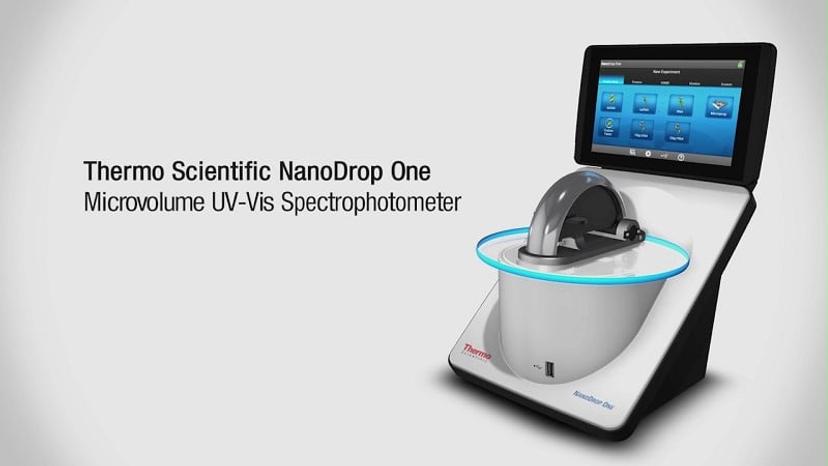Discover Fast and Accurate Quantification of Nucleic Acids and Proteins
Hear opinions of leading scientists from Cornell University, University of Pittsburgh & GlaxoSmithKline
7 Dec 2020

Hear how leading scientists use the Thermo Scientific™ NanoDrop™ One Microvolume UV-Vis spectrophotometer
Fast and accurate quantification and qualification of nucleic acids and proteins is an essential step, crucial to the success of a multitude of downstream applications. SelectScience® interviewed leading researchers about their experience of using the Thermo Scientific™ NanoDrop™ One Microvolume UV-Vis spectrophotometer for RNA, DNA and protein quantitation.
Dr Gunther Hollopeter is an assistant professor at Cornell University conducting research on the molecular mechanisms of endocytosis. Using a combination of biochemistry, imaging and genetics in C. elegans, his lab found that a conserved class of membrane-associated proteins induce conformational change in the AP2 clathrin adaptor, which starts the endocytotosis processes. Dr Hollopeter’s lab is now focused on elucidating the molecular mechanisms that regulate endocytosis in multicellular systems by incorporating structural biology and disease models into a growing repertoire of experimental approaches. Asked his opinion of the NanoDrop One spectrophotometer, Dr Hollopeter replied, “My lab loves it and highly recommends it. It is a compact, standalone instrument that is very robust and functional.” His team is particularly pleased with the new Thermo Scientific™ Acclaro™ Sample Intelligence technology that flags aberrant measurements and suggests possible causes right on the instrument’s tablet screen. He also remarks that, “the USB port is handy for charging your phone in the lab.” Visit this website to find out more about Dr Hollopeter’s research.
Martha Funderburgh, MPH, a researcher and lab manager in the Department of Ophthalmology at the University of Pittsburgh, was familiar with NanoDrop instruments prior to purchasing the newer NanoDrop One model, so knew of their helpful capabilities. She is a fan of the self-contained touchscreen, which simplifies searching for the required assay and eliminates the needs to operate the instrument with a separate computer. Martha Funderburgh remarks, “the ability to save the whole experiment on NanoDrop One is a big improvement.” Asked if she would recommend the NanoDrop One spectrophotometer, she replied, “NanoDrop One is much admired and used by others in our department for DNA and protein, as well as RNA. It is a real winner.”
Shih-Hsun Cheng, PhD, a scientist at GlaxoSmithKline, is also a satisfied NanoDrop One owner. He works in a radiochemistry lab where quality control is important and accurate protein quantification is essential for radiolabelling. Dr Cheng previously used the NanoDrop 2000 model but prefers the new software and standalone, touchscreen on the NanoDrop One instrument. As he states, “It is easy to set up the method and get the job done.” Not only is he impressed with the speed and accuracy of the NanoDrop One spectrophotometer, but he is also pleased that no experiments have failed due to poor sample quality.
